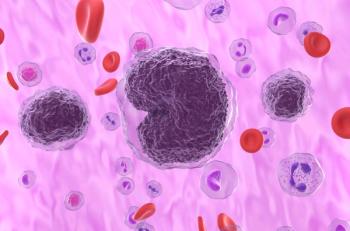
More Research Needed on SMA-Associated Costs, Resource Use
Authors of a systematic literature review concluded more research is needed to better understand the financial burden of spinal muscular atrophy (SMA).
More robust, long-term studies are needed to fully elucidate the economic burden of
SMA is estimated to occur in 1 out of every 10,000 live births, while around 95% of cases are caused by homozygous deletions in the survival of the motor neuron 1 (SMN1) gene that encodes the SMN protein, researchers explained.
“Despite ubiquitous expression, motor neurons are particularly sensitive to insufficient SMN levels, leading to progressive muscle denervation, skeletal muscular atrophy, overall weakness and loss of motor function and ambulation,” they said.
However, because it is a rare disease, small patient populations are reflected in outcomes studies, making it difficult to gain a comprehensive understanding of SMA’s treatment burden. In addition, family and caregivers tend to play a crucial role in SMA management.
To better understand cost and resource use associated with the disease, researchers used electronic databases to identify relevant studies conducted in any patient with SMA. Three disease-modifying therapies (DMTs) for SMA have been approved in the United States and Europe in the past decade, but because they are so new, few studies included in the review examined their impact on cost or resource use.
“To accommodate heterogeneity across studies including countries, currencies, populations, time units and methods of reporting used, costs were adjusted to account for inflation and were reported in Euros (EUR),” in 2019 values, authors wrote.
A total of 51 publications were included in the final analysis, reflecting 49 unique studies of patients with SMA. Both cost and resource use data were included in 23 publications, while 9 only reported cost and 19 only reported resource use data. Publications also reflected findings from 14 countries including the United States, the United Kingdom, Italy, and others.
Analyses revealed:
- Because of the heterogeneity between different SMA types, data were frequently reported separately for individuals with type 1 or early-onset SMA and for types 2, 3, and 4 SMA or later-onset SMA
- Generally, direct medical costs and resource use were reported to be highest for patients with type 1 SMA, decreasing incrementally for patients with type 2 and type 3 disease
- Where cost categories were similar, direct costs were much lower in Europe than in the United States
- Indirect costs were primarily associated with informal care, which was a substantial burden on patients and families in terms of both cost and time
- Mean annual cost of caregiver absenteeism was highest for patients with type 2 (€2431.26 or approximately $2731.80), followed by type 3 (€2237.62 or approximately $2514.22) and type 1 (€1543.66 or approximately $1734.48) SMA
- Direct non-medical costs and resource use include those associated with travel home adaptation and assistive devices
- Cost drivers were generally found to be dependent on SMA type
Overall, reported costs varied widely between studies and different SMA types. “Collectively, the evidence reviewed in this [systematic literature review] demonstrates that SMA causes a significant burden to patients, caregivers and health care systems, although the extent of the burden is dependent on the type of SMA reported,” researchers wrote.
Limited reporting impeded robust interpretation and quality assessment of these data, authors cautioned, marking a limitation to the study. Clinical trials reporting resource use data as secondary outcomes were also not included in the review and no studies examined cost and resource use based on patients’ motor function. Future studies should assess costs associated with new born screenings for SMA, authors said.
“There is a paucity of robust evidence relating to the indirect costs associated with SMA,” researchers wrote, adding, “no studies describing relevant outcomes of interest distinctly for patients with Type 4 SMA were identified, likely because this demographic has the mildest form of the disease and these patients do not typically present with symptoms until their second or third decade.”
Data on cost and resource use regarding professional caregiving, surgical procedures, and other care components were also lacking.
Reference
Paracha N, Hudson P, Mitchell S, and Sutherland CS. Systematic literature review to assess the cost and resource use associated with spinal muscular atrophy management. Pharmacoecon Open. Published online November 11, 2021. doi:10.1007/s40273-021-01105-7
Newsletter
Stay ahead of policy, cost, and value—subscribe to AJMC for expert insights at the intersection of clinical care and health economics.













































